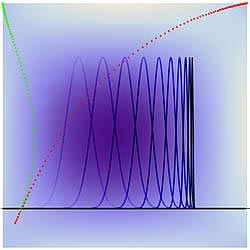April 5, 2016
Long-term response to selection predictable regardless of genetic architecture
IST Austria evolutionary biologists resolve controversial role of gene interactions for the prediction of the long-term response to selection

In their latest publication in the Proceedings of the National Academy of Sciences (PNAS) Tiago Paixao, Postdoc, and Nick Barton, Professor at the Institute of Science and Technology (IST) Austria addressed the controversial role of gene interactions (or epistasis), where the effect of one gene is affected by the presence of other genes, in the response to selection for two extremely different scenarios of evolutionary mechanisms.
Evolutionary biologists so far argued over the role of epistasis on adaptation: while its effects on the short-term response are small, some argue that these can accumulate to produce large effects in the long-term. By asking the question how much the mean of a complex genetic trait can be increased by selection, Paixao and Barton show the impact of epistasis in two different regimes, when either genetic drift or selection dominate the dynamics of allele frequencies.
In the first scenario the dynamics of the allele frequencies are dominated by the mechanism of genetic drift, which means a purely random change in the frequency of gene variant instead of favoring the best or “fittest” variant. The long-term response in this case can be predicted in a surprisingly simple way as it depends only on the initial components of the trait variance, regardless of the genetic architecture.
In the second scenario, allele frequencies change only due to their effect on the trait but, due to epistasis, this effect changes as the population adapts. The scientists show that epistasis can only affect the long-term response if the sign of this effect changes during the response (what they call an allelic reversal) which depends on the pattern of gene interactions. They show that, in contrast with the previous scenario, the initial variance components are not predictive of these allelic reversals and hence, of the long-term response.
Both scenarios have in common that, if there is no systematic bias for the gene interactions, epistasis can only increase the long-term response to selection.



